
TNU Journal of Science and Technology
229(12): 220 - 228
http://jst.tnu.edu.vn 220 Email: jst@tnu.edu.vn
EXPERIMENTS DESIGN IN THE ORGANIZATION OF PHYSICS TEACHING
TO FORM AND IMPROVE STUDENTS' PRACTICAL CAPACITY
Le Van Giao1, Bounnao Pathoumma2, Tran Quynh3*
1University of Education - Hue University
2Pakse Teacher Training College, Lao PDR
3The University of Danang - University of Science and Education
ARTICLE INFO
ABSTRACT
Received:
03/6/2024
The designing experiments in the organization of teaching Physics plays
an important role. At the same time, using designed experiments in
teaching is not only a means of organizing students' cognitive activities
but also contributes to fostering students' practical. Therefore, we
designed some experiments from the chapter "Magnetism and
Electromagnetic Induction", 12th grade Physics program of Lao PDR and
used these experiments in Physics teaching to develop practical capacity
for students. These designed experiments are created mainly by hand
from common materials and components in in daily life. Through the use
of designed experiments, students have the opportunity to make
suggestions and conduct experiments. In this article, We have proposed
the process for designing and using experiments in teaching the
knowledge of the chapter "Magnetism and Electromagnetic Induction"
12th grade Physics. The results of the pedagogical experiment show that
the process of designing and using experiments helping students develop
of practical capacity in teaching Physics at high schools, Lao PDR.
Revised:
25/9/2024
Published:
25/9/2024
KEYWORDS
Capacity
Practical capacity
Electromagnetic Induction
Experiments Design
Self-created experiment
Teaching Physics
THIẾT KẾ THÍ NGHIỆM TRONG TỔ CHỨC DẠY VẬT LÝ ĐỂ HÌNH THÀNH
VÀ NÂNG CAO NĂNG LỰC THỰC HÀNH CỦA HỌC SINH
Lê Văn Giáo1, Bounnao Pathoumma2, Trần Quỳnh3*
1Trường Đại học Sư phạm - ĐH Huế
2Trường Cao đẳng Sư phạm Pakse - Lào
3Trường Đại học Sư phạm - ĐH Đà Nẵng
THÔNG TIN BÀI BÁO
TÓM TẮT
Ngày nhận bài:
03/6/2024
Thiết kế thí nghiệm trong tổ chức dạy học Vật lý có vai trò quan trọng,
đồng thời khi sử dụng thí nghiệm đã thiết kế không chỉ là phương tiện
tổ chức hoạt động nhận thức mà còn góp phần bồi dưỡng năng lực thực
hành của học sinh. Vì thế, chúng tôi thiết kế một số thí nghiệm trong
chương “Từ trường và Cảm ứng điện từ”, Vật lý lớp 12 Trung học phổ
thông, nước Cộng hòa Dân chủ nhân dân Lào và sử dụng trong dạy học
nhằm phát triển năng lực thực hành cho học sinh. Các thí nghiệm được
thiết kế chủ yếu được tạo ra bằng tay, từ các vật liệu, linh kiện thông
dụng trong đời sống hàng ngày. Thông qua việc sử dụng thí nghiệm tự
tạo, học sinh có cơ hội đưa ra đề xuất, tiến hành thí nghiệm. Trong bài
báo này, chúng tôi đã đề xuất quy trình thiết kế và sử dụng thí nghiệm
trong dạy học kiến thức chương “Từ trường và cảm ứng điện từ” Vật
lý lớp 12. Kết quả thực nghiệm sư phạm chỉ ra rằng quy trình đã xây
dựng giúp học sinh khắc sâu kiến thức đồng thời góp phần phát triển
năng lực thực hành trong dạy học Vật lý THPT, nước Cộng hòa Dân
chủ nhân dân Lào.
Ngày hoàn thiện:
25/9/2024
Ngày đăng:
25/9/2024
TỪ KHÓA
Năng lực
Năng lực thực hành
Cảm ứng điện từ
Thiết kế thí nghiệm
Thí nghiệm tự tạo
Dạy học Vật lí
DOI: https://doi.org/10.34238/tnu-jst.10531
* Corresponding author. Email: quynhtranca@gmail.com

TNU Journal of Science and Technology
229(12): 220 - 228
http://jst.tnu.edu.vn 221 Email: jst@tnu.edu.vn
1. Introduction
Physics is an experimental science. Therefore, most of the knowledge of physics is derived
from observations and experiments. The use of experiments and the use of designing experiments
in teaching physics is an indispensable requirement. The necessity of using experiments in
research in general and teaching physics, in particular, is also determined by the general law of
human perception that Lenin has shown: “From intuition to abstract thinking and from abstract
thinking to practice is the way to perceive the truth, to perceive objective reality” [1]. It can be
said that experiments always play a very important role in teaching physics in high schools.
However, the experiments in the list of minimum laboratory equipment provided, only partially
meet the needs of using experiments in teaching physics in high schools. Therefore, it is very
necessary to build and use self-created experiments in teaching physics [2], [3]. Moreover, with
the advantages of being easy to operate, easy to carry out, as well as self-created experiments that
do not require strict conditions on facilities, it is possible to conduct experiments anywhere,
anytime. It is easy to promote the role of self-created experiments in teaching Physics [4], [5].
Thus, the study of using self-created experiments in teaching has always been a key issue in the
trend of finding ways to improve the effectiveness of physics teaching in high schools today. The
study, design, manufacture, and use of self-created experiments not only help students deepen
their knowledge, but also help train students with practical skills and techniques, such as
proposing experimental plans; processing, assembling, conducting experiments; Collect, process,
and drawing conclusions, thereby contributing to the development of practical capacity for
students in teaching physics in high schools [6].
Education Strategy of the Lao Ministry of Education & Sports (2020) and the Education
Strategy of the Ministry of Education & Training of Vietnam all affirm a strongly shifting from
teachers' lecture-heavy teaching methods to active teaching methods to form skills; increase
personal activity; attach importance to skill training as equal to knowledge transmission;
increase exploitation, use experiments and visual aids in teaching [7] - [9]. In Europe,
especially in Germany, many authors have been interested in research self-created experiments
such as Michael Völlmer, Klaus Peter Möllmann (2011); Hans-Jörg Jodl and Bodo Eckert
(1998); Hans-Joachim Wilke (2004) and D.K. Nachtigall, J.Diecküfer, G.Peters (1996) [10] -
[13]. The authors have researched on self-created and used self-created experiments in teaching
most of the parts such as: Mechanics, Thermodynamics, Electricity, Optics… Most self-made
experiments are made simply from cheap materials, easy to find: soft drink cans, water
bottles... [14].
When studying the current situation of using Physics experiments by teachers in some high
schools, it showed that: The reason why teachers have difficulty in teaching is that some schools
do not have laboratories and the teacher could not conduct the experiment for lack of
experimental equipment and thereby recommending that teachers should experiment with simple,
cheap and easy-to-find materials to use in teaching.
From the above analysis, researching the construction and use of designed experiment in
teaching physics in high schools is very meaningful scientifically and practically in the context of
teaching the chapter "Magnetism and Electromagnetic Induction" Physics Grade 12 High School
of Lao PDR, thereby contributing to the effective implementation of the 9th Education Strategy
(2021–2025) of Lao PDR.
2. Research method
The topic uses a combination of research methods: theoretical research (analyzing and
synthesizing theories related to the research problem); Practical research (observe lessons, refer
to teacher lesson plans, interview, survey using questionnaires); Experimental methods of
pedagogy and mathematical statistics.

TNU Journal of Science and Technology
229(12): 220 - 228
http://jst.tnu.edu.vn 222 Email: jst@tnu.edu.vn
3. Results and Discussion
3.1. Results of practical investigation
Survey results of 22 Physics teachers and laboratory managers in Pakse City, Champasak
province, Laos show that: teachers do not often use experiments, the reason is because
Experimental tools lack uniformity. In addition, when being asked about the quality of the
experimental equipment in the chapter "Magnetism and Electromagnetic induction", 45.4% of
teachers said that the quality was not guaranteed, and 22.7% of teachers said that the
experimental equipment was not consistent. 18.1% of teachers think that the equipment is
damaged and cannot be used and only 13.6% of teachers think that the equipment is equipped
with quality assurance. In addition, Physics teachers also believe that using experiments in
teaching physics is very necessary, contributing to the development of students' practical
capacity. The survey results show that 72.7% of teachers think that using experiments in teaching
physics is very necessary. And when asked about the use of self-created experiments in teaching
physics, more than 81% of teachers said that they only create their own experiments when
participating in teaching aid competitions and when there is a certain program organized. Nearly
14% of teachers think that they only create their own experiments when teaching and more than
4% of teachers use it for daily teaching. In addition, we also conducted a survey on the level of
interest in learning Physics of 280 grade 12 students. The number of students who said they liked
it when teachers used self-created experiments in teaching physics accounted for 45.5% and 55%
of students feel normal when teachers use self-created experiments.
3.2. Results of theoretical basis
3.2.1. The process of Self-created experiments
Based on research on design experiments, we propose the process of design experiments
according to the following steps:
Step 1: Determine the experimental goal
Objectives of the Experiment are expressed through 3 elements: knowledge, skills and
attitudes. Therefore, it is necessary to clarify the use of design experiments to form what
knowledge and abilities for students.
Step 2: Research the lesson content and then propose an experiment plan
On the basis of researching teaching objectives and lesson content, teachers need to determine
which knowledge content in the lesson can create their own experiments to form knowledge for
students. On that basis, teachers can propose appropriate experimental plans.
Step 3: Find out the current condition of the facilities and prepare materials
Through understanding the current state of the facilities, point out which experiments already
exist and which experiments need to be created for use in teaching.
Step 4: Machining, manufacturing experimental equipment
From the prepared materials, we proceed to process and manufacture experimental equipment
and they must ensure that they meet the requirements.
Step 5: Assemble the experimental kit
After completing the processing of the necessary experimental tools, the next step is to
assemble the experiment according to the proposed plan. Assembling the experiment requires
care and precision to ensure feasibility and accuracy.
Step 6: Test and complete the experiments
Check for errors and defects during the machining process to fix unsatisfactory problems, to
enhance the visualization, aesthetics, and durability of the Experiment Set and ensure it can be
used many times. Figure 1 describes six step of the process of design experiments to develop of
practical capacity in teaching Physics.

TNU Journal of Science and Technology
229(12): 220 - 228
http://jst.tnu.edu.vn 223 Email: jst@tnu.edu.vn
Figure 1. The process of design experiments
3.2.2. Design experiments in teaching chapter: Magnetism and electromagnetic induction
Experiment:
Magnetic force acting on an electric current in a magnetic field
a) Experiment purpose:
⁃ Show that there is a magnetic force acting on an electric current placed in a magnetic field.
⁃ Check the left-hand rule.
b) Proposing and selecting experimental plans:
Proposing some experimental plans to prove that there is a magnetic force acting on a current-
carrying wire when placed in a magnetic field and choose the most feasible option to conduct
self-created experiments Figure 2.
c) Prepare materials, Experimental equipment:
⁃ 01 Copper round bar (Long 50 cm, Diameter 1 mm); 01 Battery 6V; 02 Wire; 01 Magnet U.
⁃ 01 Round wooden bar (Long 20 cm, Diameter 2 cm); 02 Screws; 01 Pieces wood (20 cm
x 25 cm x 2 cm); 02 Support legs; 01 Switch.
d) Machining, manufacturing experimental equipment:
⁃ Processing and assembling the hanging stand as shown in (1): screw on one side of two
round wooden bars, then attach it to the wooden board as a support.
⁃ Making hanging rails (2): Bend the copper bar into a U shape to fit the hanging base.
e) Assemble the experimental kit
Hang the U-shaped copper rod (2) on the hanging base (1) and place the U-shaped magnet so
that the copper bar is in the center of the Magnet as shown in (3) and install the battery to form an
electrical circuit, we have the experiment as follows on Figure 2.
Figure 2. Design experiments about Magnetic force acting on current in a uniform magnetic field
f) Test and complete the experiments
Conduct a test: Open the power switch, observe that the copper rod is pushed out of the
equilibrium position forward, reverse the direction of the current, then observe that the copper
rod is pushed out of the equilibrium position in the direction opposite. Through experimenting,
Step 1: Determine the experimental goal
Step 2: Research the lesson content and then propose an experiment plan
Step 3: Find out the current condition of the facilities and prepare materials
Step 4: Machining, manufacturing experimental equipment
Step 5: Assemble the experimental kit
Step 6: Test and complete the experiments

TNU Journal of Science and Technology
229(12): 220 - 228
http://jst.tnu.edu.vn 224 Email: jst@tnu.edu.vn
detecting limitations to overcome to ensure the most obvious results, thereby completing the
experiment: Magnetic field acting on a moving charge as shown in Figure 2.
Similarly, based on the above procedure, we have created some other experiments in Chapter
"Magnetism and electromagnetic induction" Physics 12 including (Figure 3):
Figure 3. Design experiments to teach Chapter “Magnetism and electromagnetic induction”
3.2.3. The process of organising teaching with the use of experiments design
In teaching physics, experiments design can be used at different stages in the teaching process, such
as: proposing the problems, solving the problem, and consolidating and applying knowledge (Figure 4).
When using experimental design in physics teaching, it is necessary to master the following
requirements:
- Clearly define experiments design to be used at any point in the teaching process. It is
necessary to determine that the purpose of using experiments in the lesson is to propose
problems, form new knowledge or consolidate and apply knowledge.
- It is necessary to determine whether the experiment is conducted by the teacher or the
students: if the teacher conducts the experiment, before conducting the experiment, it is necessary
Experiment 1: The
relationship between
electricity and magnetism
Experiment 2: Magnetic
interaction of a charge-
carrying wire
Experiment 3: Magnetic
field lines
Experiment 4: Magnetic field
lines of long straight current
Experiment 5: Magnetic
field lines of circular
current
Experiment 6: Magnetic
field lines of the current
flowing through the coil
Experiment 7: Magnetic
force acting on a magnet
Experiment 8: Magnetic force
acting on an electric current
placed in a magnetic field
Experiment 9: Interaction
force between two
parallel straight currents
Experiment 10: Model
of a DC motor
Experiment 11: The
phenomenon of electromagnetic
induction when the magnet and
the wire are moving with respect
to each other
Experiment 12: The
phenomenon of
electromagnetic induction
when the current in the coil
changes
Experiment 13: Foucault
current
Experiment 14:
Electromagnetic brake model
Experiment 15: self-
inductance phenomenon
when on the circuit
Experiment 16: Self-
inductance phenomenon
when the circuit is cut off


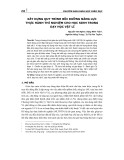
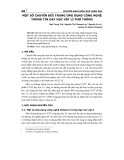


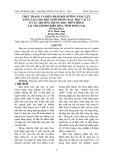
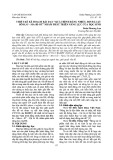
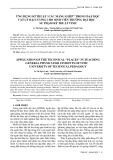
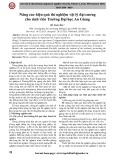
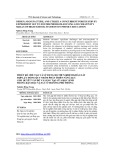
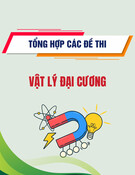


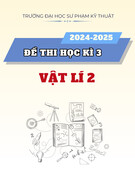
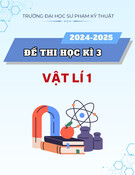
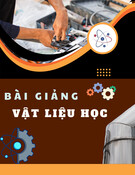
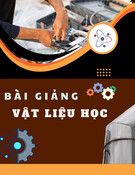
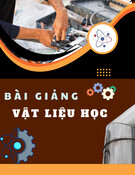
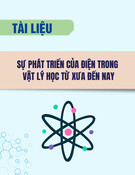
![Bộ câu hỏi lý thuyết Vật lý đại cương 2 [chuẩn nhất/mới nhất]](https://cdn.tailieu.vn/images/document/thumbnail/2025/20251003/kimphuong1001/135x160/74511759476041.jpg)
![Bài giảng Vật lý đại cương Chương 4 Học viện Kỹ thuật mật mã [Chuẩn SEO]](https://cdn.tailieu.vn/images/document/thumbnail/2025/20250925/kimphuong1001/135x160/46461758790667.jpg)




